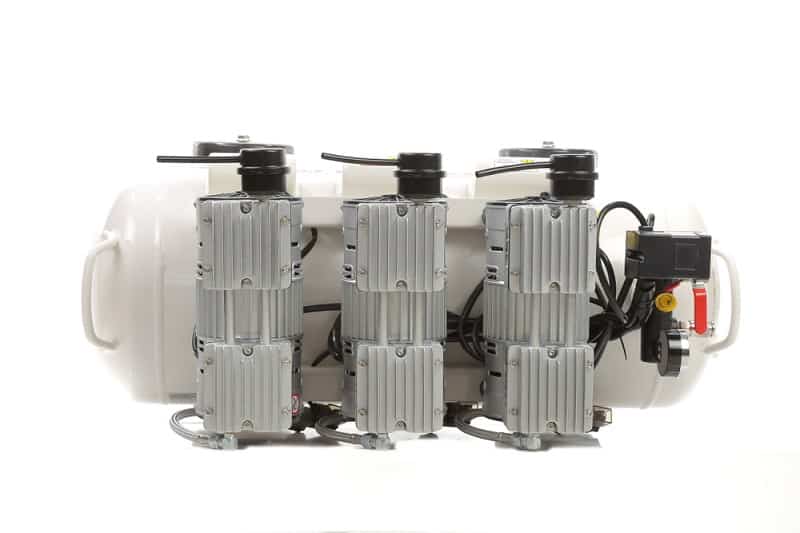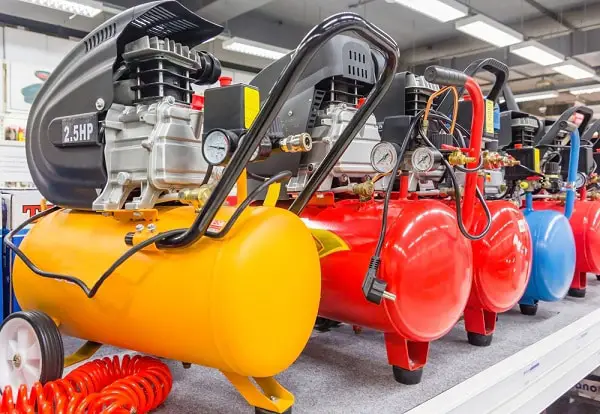
Air Compressor Parts
Air compressors are super handy pieces of equipment that serve a long list of varying purposes – no matter who you are, what you do, or what you need the air compressor for.
If you’re a business owner, these handy air compressors can be used for cleaning, tool use, tire-filling, and much more. If you run or work in an auto repair shop, air compressors are the muscle behind many important tools, such as tire pumps, spray painting guns, drills, nailers, engine cleaning equipment, etc. If you perform a lot of home maintenance, an air compressor will prove to serve as the one-stop tool for all of your repair and cleaning needs (such as cleaning your driveway, nailing wood together, painting walls, you name it).
Even if you’re a DIY (do-it-yourself) enthusiast who dabbles in many home projects, you’ll find that an air compressor is truly one of the most useful and versatile tools in the shed.
As you can see, air compressors are workhorses that can serve you for a long time, working hard yet effortlessly. However, this doesn’t come about just by simply owning the machinery and utilizing it. As with anything in life that you want to maintain and keep in good working operation, you’ll have to take some time to make sure that all the internal and external parts of your air compressor are working properly and in good condition.
Each piece serves its own specific purpose in your air compressor, so it’s important to understand what each part does so that you can be able to diagnose issues that arise and properly maintain your air compressor.
To help you gain a better understanding of your air compressor’s anatomy, we’re here to help. Let’s take a look at the most important parts of your air compressor so that you can keep your equipment in good working condition. This way, your air compressor will serve you for years and years to come.
Air Filter
The air compressor air filter is usually found in the air intake area of your air compressor system. As the name implies, the compressor air filter is responsible for filtering incoming air of solids and other impurities that could otherwise get clogged in your machine and ruin it over time.
Naturally, dust is the number one archenemy for your compressor air filter. If dust continues to get in your filter, it causes damage to your compressor valves, element, and other vital parts. Therefore, you should prevent dust from entering your filter at all costs. This will also preserve the life of your air compressor’s oil, oil filters, and many other key components.
To keep your compressor air filter in good standing, it will need to be either replaced or cleaned routinely. Especially if you’ll be using your compressor in a dusty environment, you’ll want to perform this maintenance more frequently.
Oil Filter
As the name suggests, the oil filter serves the same type of purpose as the air filter, with the exception that it is filtering the compressor oil of any impurities instead.
If debris such as dust, sand, or small pieces of foreign substances get into your system via the compressor oil, you’ll experience a shorter life span of your compressor altogether, starting with the bearings and the element. Just like the air filter, be sure to change your oil filter regularly to avoid this from happening.
Pressure Switch
No matter what brand or type of air compressor you have, every air compressor is likely to have some version of a pressure switch. Essentially, the pressure switch is the component that communicates to the compressor when it should start and stop operation.
On older air compressor machines, you’ll likely have more of a manual pressure switch, with set-screws being used to set the top and bottom pressure limits. For newer air compressor systems, however, you can expect to find a pressure sensor complete with an LCD-screen and buttons to easily control your compressor machine.
Since this is a component that receives a lot of direct contacts (by you), it is naturally susceptible to quicker wear and tear. There is no way around this, but just be prepared to replace it if ever needed.
Compressor Oil
Although it’s not technically a part, it is a key component of your air compressor system and requires regular maintenance. An air compressor system involves high-temperatures and several components that have the potential to grind against one another. Air compressor oil, therefore, is specially made to withstand the high temperatures. To keep your air compressor running optimally and to avoid unnecessary wear and tear, change your compressor oil frequently, to the tune of every 7000-8000 hours of use.
Air Compressor Unloader
Although a rather small part of the air compressor, the air compressor unloader is no less important. The unloader is a valve that is responsible for blowing off pressure inside the discharge pipe once the compressor system comes to a stop. If you find that your air compressor doesn’t restart after you’ve used air from the tank, the most common reason is that your air compressor unloader valve may have failed. Though this part is not a routine maintenance piece, it may need replacement over time as it wears.
Screw Compressor Unloader/Inlet Valve
As mentioned above, the air compressor unloader is responsible for regulating the amount of air that is allowed into your air compressor tank.
The inlet valve, on the other hand, is responsible for regulating the capacity of the screw compressor, and the screw compressor unloader is responsible for regulating the total amount of air that can be sucked up by the air compressor system. As the air intake is closed or opened, the screw compressor unloader is regulated.
Of course, there are other important key parts of the average air compressor, such as the check valves, compressor cooler, compressor motor, pulley, and more. However, the parts mentioned above are some of the most important and heavily utilized pieces of the air compressor “puzzle”.
Related Video:

